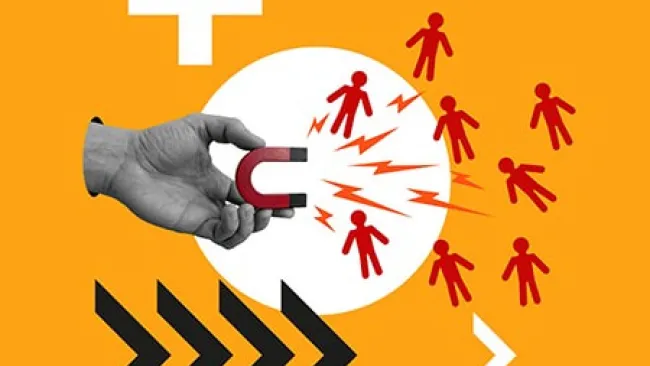Much like consumers, B2B prospects are doing their homework before they engage with a sales associate. Sixty-eight percent of buyers have increased the amount of content they consume to help guide their purchasing decisions, according to a 2015 DemandGen report.
Like consumers, B2B customers have also become more empowered in the purchasing cycle. Buyers are doing more research online, including their use of community forums and other digital touchpoints to guide their decision-making.
As B2B buyers expand their use of digital channels, they’re opening new opportunities for sales and marketing leaders to engage prospective buyers with relevant messaging.
Based on our experiences with clients, we see three effective ways to drive improved B2B sales results using digital engagement techniques.
1. Sales associates must act like consultants. B2B sales associates need to operate more like consultants in their interactions with clients and prospects. Sales associates need to gain a deeper understanding of a prospect’s needs to be better positioned to assist, convert, and retain them.
This begins with recognizing the steps that clients take in their purchase journeys, including the type of information they gather, the channels they’re using for product and pricing research, and the various marketing touchpoints used to engage them across points in the funnel.
Meanwhile, business clients crave efficiency. Clients don’t want their time wasted by going over basic product information or other facts they’ve likely uncovered through their own research.
Successful marketers employ strategies and technologies that allow sales reps to better understand exactly where a prospect is in their purchase journey and the touchpoints they’ve used long the way. This allows for a deeper understanding of each specific client, resulting in more relevant conversations and a higher propensity to convert.
2. Sales and marketing must be joined at the hip. We’ve all heard it countless times before, but sales and marketing teams need to be better integrated in order for both functions to meet their business objectives. In most organizations, sales and marketing teams typically don’t communicate enough with one another, resulting in tremendous inefficiencies—marketing initiatives are not aligned with the overall sales goals.
Successful companies have greater communication and alignment between digital marketing and sales.
Tackling the cultural changes is an important starting point for conquering the sales and marketing divide. First and foremost, the walls between departments need to be broken down. This means the strategies and technologies utilized by the sales team are communicated and, most importantly, integrated with marketing initiatives. Doing so decreases the duplication of work and creates less media waste, saving brands thousands of dollars that can then be reinvested in growth initiatives.
While this challenge may seem daunting to well-established brands, the integration between sales and marketing is crucial to staying relevant in today’s ever-connected world. Some companies have created positions, like Chief Revenue Officer, which are responsible for guiding and executing the integration between sales and marketing.
However, because this is a new title in many companies, the CEO should spearhead initial efforts to achieve faster, more comprehensive integration between sales and marketing.
3. Develop a clear and holistic marketing roadmap. The creation of a comprehensive marketing roadmap can be used to document each of the touchpoints across the buyer journey and showcase the content communicated to prospective clients at each touchpoint. The marketing roadmap can also be used to set up technical integration between marketing systems (email, mobile, etc.) and be used for training sales reps.
When brands have the right processes, technology, and people in place, their sales reps can better understand what content has been consumed by prospects and clients prior to engaging to drive more relevant and meaningful conversations.
When alignment between digital marketing and sales is handled properly, the results can be powerful. One brand we worked with had an established demand-generation team that scaled their campaigns across all departments within their organization, creating tremendous efficiencies.
The company developed an integrated marketing framework detailing initiatives across their brand awareness, e-commerce and product teams, while also making use of streamlined processes and technologies that crossed over to sales.
These efforts dramatically decreased media waste, enabling the brand to exceed its annual revenue goal by 19 percent year over year.
Simplifying the journey for prospects and customers reduces the amount of time and effort they have to devote on their paths to purchase. Providing customers and prospects with more relevant information and messaging at different touchpoints leads to improved buyer satisfaction, including the interactions they have with sales associates.
As B2B buyers increase their reliance on digital channels to guide their purchase decisions, there are rich opportunities for using these touchpoints to engage more effectively with buyers and improve the buyer experience.
Three Ways to Drive B2B Sales via Digital Customer Engagement















